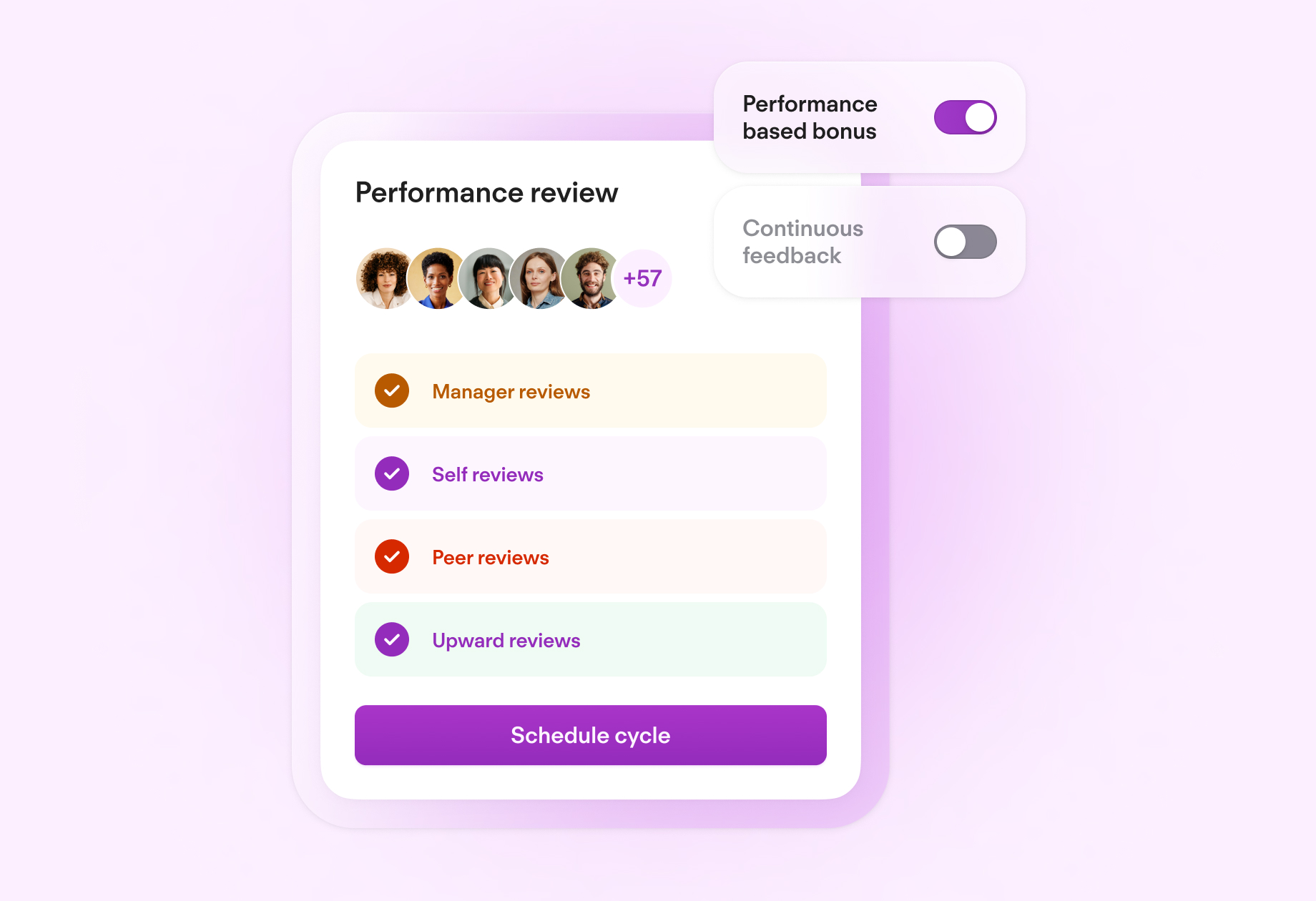
Our weekly HR newsletter
Stay ahead with the latest in HR, delivered straight to your inbox.
Subscribe hereLatest Blog Posts
Labour Turnover: Define It, Understand It, Calculate It Today

Not all types of employee turnover are a cause for concern, but elevated rates of departure can have detrimental effects on business.
This guide outlines the fundamentals of labour turnover, explaining how to calculate it, its root causes and effects and how to improve employee retention.
Key Takeaways
Labour turnover refers to the net departure of employees over a defined period of time.
It can be divided into voluntary vs. involuntary and avoidable vs. unavoidable labour turnover.
Some common causes of labour turnover include employee dissatisfaction, organisational downsizing, and employee relocation.
What Is Labour Turnover?
Labour turnover is a metric that refers to an organisation’s net employee separations over a defined period of time. It is often referred to as ‘employee turnover’ and is closely related to employee attrition, also known as churn rate.
Employers should regard some level of employee movement as normal. However, consistently elevated rates of labour turnover can also point to problems within the workplace that should be addressed. There are various reasons why high turnover is undesirable, including:
High cost of hiring, onboarding and training new employees
Valuable expertise and experience may get lost
Potential negative impact on overall business performance
Types of Turnover
Labour turnover can be categorised in different ways. The most common approach is to divide employee separations into ‘voluntary’ and ‘involuntary’ or ‘employee initiated’ versus ‘employer initiated.’ One can also classify labour turnover as ‘avoidable’ and ‘unavoidable’.
Involuntary Turnover (Employer Initiated)
Involuntary turnover occurs when an employee leaves an organisation for reasons outside of their control. This can be because their employer has terminated their contract or is phasing out their role, for example.
Voluntary Turnover (Employee Initiated)
Voluntary turnover is where an employee chooses to leave their organisation. Examples of voluntary turnover include resignation and retirement.
Avoidable Turnover
Avoidable turnover describes employee separations that are within the employer’s control. Examples of this type of turnover include departures caused by employee dissatisfaction, a dislike for company culture, or insufficient growth prospects.
Unavoidable Turnover
In contrast, unavoidable turnover refers to departures that are caused by factors out of the employer’s control. Instances of unavoidable turnover include geographic relocations or health issues.
Labour Turnover Calculation
The labour turnover rate is calculated by dividing the employees who left during a specific period of time, by the average number of employees during the same window. To get a percentage, this number is then multiplied by 100.
In order to make these calculations, you will need the following three figures:
Number of employees who left through the period
Number of employees at the beginning of the period
Number of employees at the end of the period
Once you have these three numbers in hand, calculate the average number of employees in your defined period of time:
(Number of employees at beginning of period + number of employees at end of period)/2
Labour Turnover Formula
To produce your employee turnover rate as a percentage, insert your numbers into this formula:
Employee turnover = (number of employee departures / average number of employees) x 100
You can put your numbers through a staff turnover calculator.
Sample Labour Turnover Calculation
You can calculate annual and monthly turnover using the same formula but with different inputs.
Here is an example of a monthly turnover calculation:
Number of employees who left during the month = 7
Number of employees at beginning of the month = 150
Number of employees at the end of the month = 146
Thus, the average number of employees = (150 + 146) / 2 which is 148.
Therefore, this organisation’s employee turnover rate for this month is (7 / 148) x 100 = 4.7%
To calculate the annual turnover rate, you will apply annual numbers instead, i.e. the number of employees who departed during the year, the number of employees at the beginning of the year and end of the year.
A Motivating Corporate Culture

Defining, sharing and living values: Your corporate culture forms the basis for cultivating your employees’ engagement and motivation. This guide shows you how.
Download NowHow To Interpret Your Labour Turnover Rate
When you’ve calculated your labour turnover rate, you need to know how to interpret and leverage the result.
While a high turnover rate can be detrimental to your business, so too can a zero or low turnover rate. It could mean your workplace is stagnant and harbouring underperformers, affecting culture and productivity.
In many ways, the percentage itself won’t tell you very much, which is why it’s important to delve beyond the numbers. Here are some tips on how to do that:
Compare With Industry Standard
Firstly, it’s important to remember that some level of labour turnover is to be expected: employees are expected to retire at some point and unfortunately, health issues are sometimes unavoidable.
This is why it’s essential to contrast your internal turnover rate with your industry or sector’s average. If you find that your turnover rate is higher than expected, this might indicate that you are experiencing more avoidable or voluntary turnover than you thought.
Look at Your Turnover Rate in Detail
Investigate who is leaving and why to gain a granular view of what kind of turnover is happening.
Additionally, make sure to react to your data findings proactively. If you find, for example, that a high proportion of recent joiners are leaving, this could point to issues within your onboarding process.
Carry Out Exit Surveys
To gain deeper insight into your labour turnover rate, conduct exit surveys to find out individual employee’s motivations for leaving your organisation. If you identify a trend or commonality, this can point to an issue that you may need to resolve.
Causes of Avoidable Labour Turnover
As we’ve seen, labour turnover is a multi-faceted term that covers different types of employee separations. Here we’ll look at some of the most common reasons for voluntary or avoidable labour turnover.
Bad Hiring Practices
Some avoidable labour turnover stems from before an employee even joins an organisation. If your hiring or recruitment processes fail to identify whether a candidate is suited to your workplace or aligns with your values, this may set new joiners up for failure.
Lacklustre Onboarding
Welcoming new employees to your organisation is a critical period in which to mitigate against labour turnover. Indeed, as the Harvard Business Review found, up to 20% of staff turnover often occurs within the first 45 days of employment. This is why employers who don’t invest in their onboarding and welcoming process may experience elevated turnover.
Negative Employee Experience
Employee experience is directly linked to labour turnover. Therefore, employers who don’t take employee experience seriously or fail to address employee concerns, wants, or desires in the workplace may find that dissatisfaction leads to departures.
4 Ways To Minimise Labour Turnover
As the name suggests, avoidable turnover is, by fact, avoidable. Here are five actionable ways that employers can seek to reduce voluntary employee separations:
1. Increase Your Compensation Packages
In a competitive talent and hiring market, one key to employee retention is reviewing compensation packages. Indeed, employee dissatisfaction with pay has been found to catalyse higher rates of turnover.
2. Refine Your Hiring Practices
Improving recruitment practices and introducing more robust hiring processes will help to prevent new employees who don’t align with your organisation’s culture or values from joining.
3. Improve Your Onboarding Process
As we mentioned, onboarding is key to preventing early employee churn. Ensure to invest in making new joiners feel welcome, embedding them in your workplace culture and introducing them to all aspects of what it means to work for your business.
4. Invest in Employee Experience
Investing in employee experience is essential for reducing rates of labour turnover. However, this is actually quite an abstract concept and can be rather hard to put into concrete terms. One example is proactively providing opportunities for employee growth and development to improve overall satisfaction. Indeed, 61% of employees surveyed in the US said that they consider the opportunity to add new skills as an extremely important factor in deciding whether or not to stay at their current job.
Frequently Asked Questions About Labour Turnover
What Is an Example of Labour Turnover?
There are different types of labour turnover. An example of voluntary labour turnover is where an employee chooses to leave an organisation for another job because they feel they have insufficient growth prospects in their current position.
An example of involuntary labour turnover is where an employer terminates an employee’s contract because they don’t meet performance expectations.
What Is Labour Turnover and What Causes It?
Labour turnover is a generic term that refers to all types of employee separations within a certain period of time.
Common causes of avoidable labour turnover include employee dissatisfaction or negative company culture.
Unavoidable labour turnover refers to instances where employees leave because they’re relocating or because they have health issues.
What Is the Labour Turnover Formula?
Labour turnover is calculated using the formula: Employee turnover = (number of employee departures / average number of employees) x 100. It can be differentiated between annual and monthly labour turnover calculation.
How Do You Control Labour Turnover?
Some types of labour turnover are uncontrollable, if not to be expected. However, certain types of employee departures can be reduced by reviewing hiring practices and investing in employee experience.
Final Thoughts
Addressing employee turnover is only possible if you constantly keep track of it. Using software such as Personio can help you keep tabs on employee separations and why they’re happening. Book a demo here to find out how Personio can help you and your business.
Disclaimer
We would like to inform you that the contents of our website (including any legal contributions) are for non-binding informational purposes only and does not in any way constitute legal advice. The content of this information cannot and is not intended to replace individual and binding legal advice from e.g. a lawyer that addresses your specific situation. In this respect, all information provided is without guarantee of correctness, completeness and up-to-dateness.

